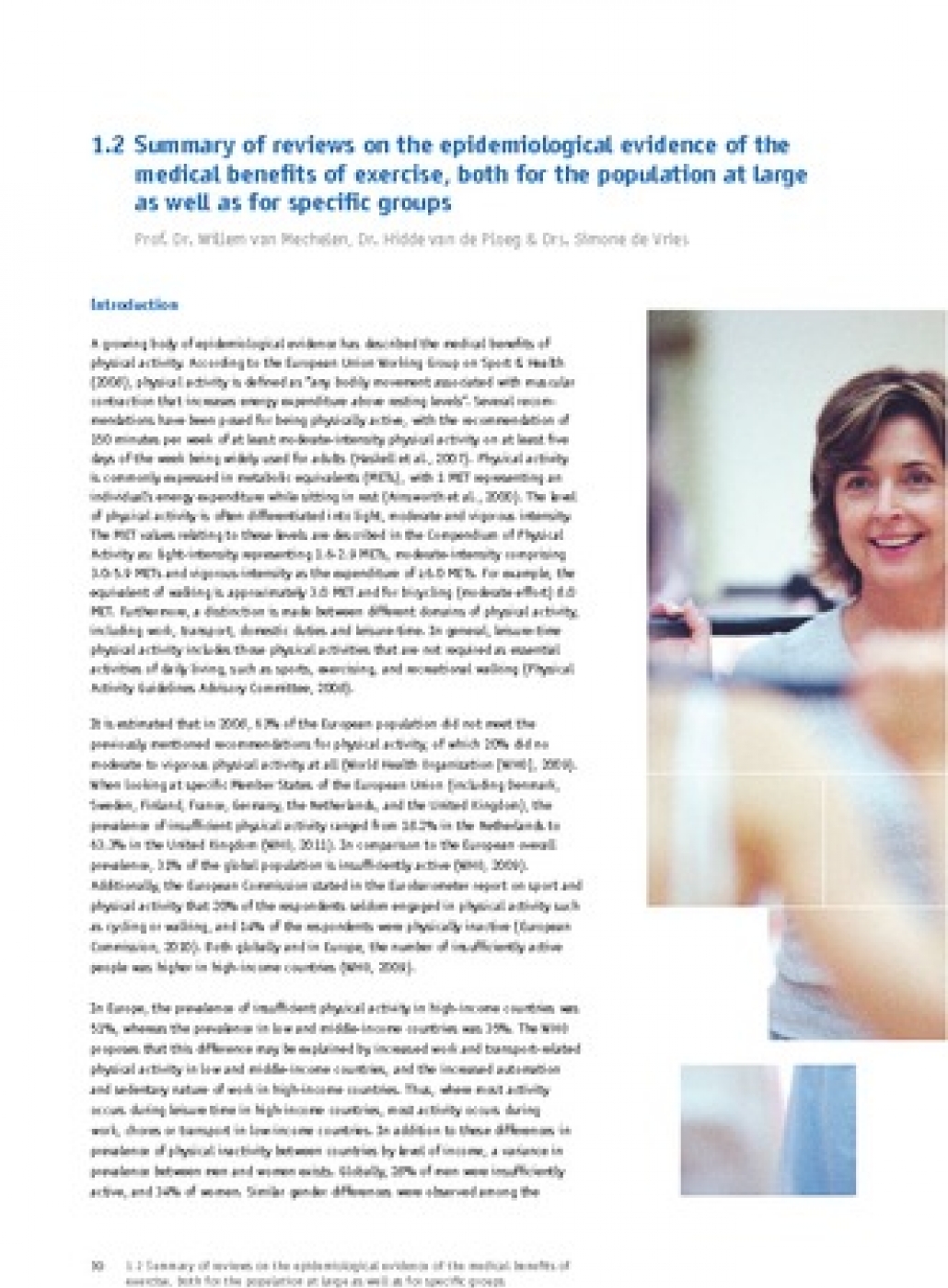

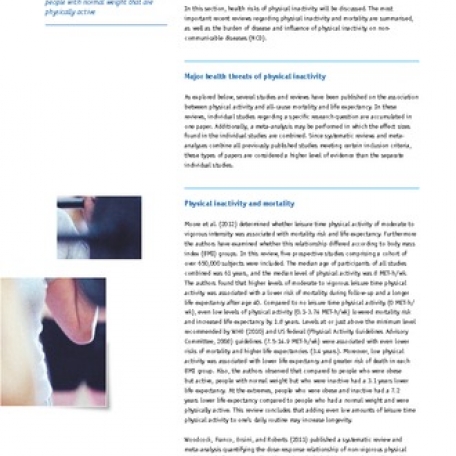

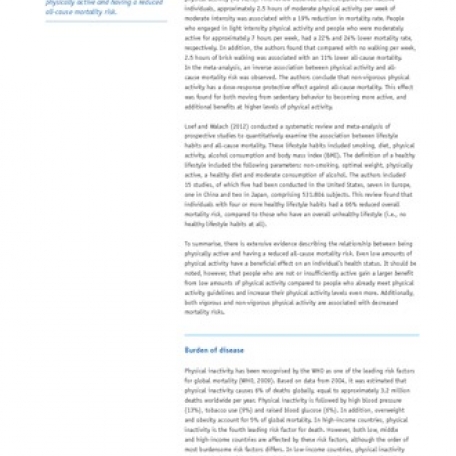
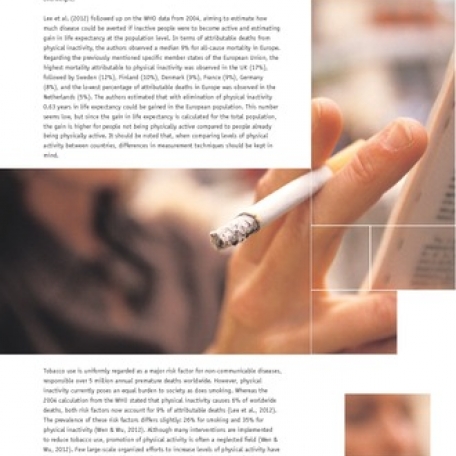
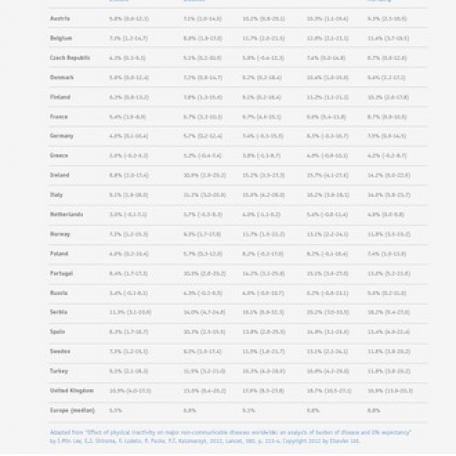
Summary of reviews on the epidemiological evidence of the medical benefits of exercise
T.w.v. € 9,95 A growing body of epidemiological evidence has described the medical benefits of physical activity. According to the European Union Working Group on Sport & Health (2008), physical activity is defined as “any bodily movement associated with muscular contraction that increases energy expenditure above resting levelsâ€Â. Several recommendations have been posed for being physically active, with the recommendation of 150 minutes per week of at least moderate-intensity physical activity on at least five days of the week being widely used for adults (Haskell et al., 2007). Physical activity is commonly expressed in metabolic equivalents (METs), with 1 MET representing an individual’s energy expenditure while sitting in rest (Ainsworth et al., 2000). The level of physical activity is often differentiated into light, moderate and vigorous intensity. The MET values relating to these levels are described in the Compendium of Physical Activity as: light-intensity representing 1.6-2.9 METs, moderate-intensity comprising 3.0-5.9 METs and vigorous-intensity as the expenditure of ≥6.0 METs. For example, the equivalent of walking is approximately 3.0 MET and for bicycling (moderate effort) 8.0 MET. Furthermore, a distinction is made between different domains of physical activity, including work, transport, domestic duties and leisure-time. In general, leisure-time physical activity includes those physical activities that are not required as essential activities of daily living, such as sports, exercising, and recreational walking (Physical Activity Guidelines Advisory Committee, 2008). Read more in this Ebook chapter of The future of health and fitness (2014).- Aantal pagina's: 12
- Type: E-Books
- Taal: Engels